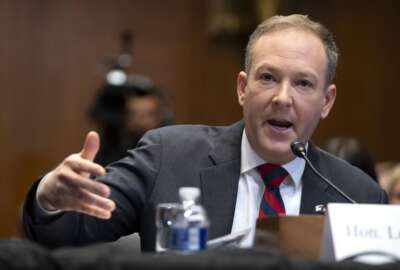New bill could curtail FEHBP prescription drug costs
The FEHBP Drug Integrity, Transparency and Cost Savings Act would give OPM more oversight of contracts and pricing methods. Rep. Stephen Lynch (D-Mass.) said the...
Rep. Stephen Lynch (D-Mass.) is trying a third time to reduce the costs of prescription drugs under the Federal Employees Health Benefits Program. Lynch, the ranking member of the Oversight and Government Reform Subcommittee on the Federal Workforce, U.S. Postal Service and the Census, introduced the FEHBP Drug Integrity, Transparency and Cost Savings Act, H.R. 1367, on March 21.
The bill would give the Office of Personnel Management more oversight of contracting and pricing methods for the prescription drug benefit. The goal is to make sure the 8.2 million federal employees, annuitants and dependents are paying the lowest possible cost.
“Through enhanced oversight provisions that allow for alternative contracting and pricing mechanisms and mandate increased transparency, my legislation will serve to maximize cost savings and enhance the program’s ability to offer high-quality and low-cost prescription drugs,” Lynch said in a release.
The legislation would require the Pharmacy Benefit Managers (PBMs), who currently contract with individual insurance plans “to provide FEHBP prescription drug benefits, return 99 percent of all rebates, market share incentives and other monies received from pharmaceutical manufacturers for FEHBP business.” In addition, the legislation would prohibit “drug switching” without prior physician approval, impose new disclosure and transparency requirements on PBMs in line with industry trends, and cap prescription drug prices paid by the FEHBP at the amount of the Average Manufacture Price (AMP).
Previous attempts by Lynch to improve the FEHBP drug benefits haven’t gotten very far — never getting out of committee and onto the floor for a debate and vote.
Lynch said changing how OPM oversees the drug benefit program would save the government billions of dollars.
OPM estimates the FEHPB provides an estimated $45 billion in health care benefits per year and spends more than $10 billion of that amount on prescription drug costs alone.
Lynch said the program’s pharmacy benefit and pricing structure has been subject to limited federal oversight and, compared to other federal programs such as those run by the Defense and Veterans Affairs departments and the Centers for Medicare and Medicaid Services, the FEHBP pays between 15 percent and 45 percent more for its prescription drugs.
Federal employee unions praised Lynch’s bill.
“Rising prescription drug costs continue to be a major factor pushing health care costs higher for those under the FEHBP,” National Treasury Employees Union (NTEU) President Colleen Kelley said in a statement. “This bill brings down those costs and will help contain the higher health care premiums federal employees have been facing for several years.”
J. David Cox, the president of the American Federation of Government Employees, said the cost of prescription drugs is a major reason for the rising premiums of FEHBP over the last few years.
In fiscal 2010, FEHBP premiums rose on average by 8.8 percent. In 2011, premiums rose on average by 7.2 percent. In 2012, costs rose by 3.8 percent. And in 2013, they rose by 3.4 percent.
RELATED STORIES:
OPM in talks to add 6 new carriers to FEHBP
FEHB premiums to increase by 7.2 percent in 2011
Premiums for federal health plan set to increase 3.4 percent
Feds’ health premiums to increase 3.8 percent
Copyright © 2025 Federal News Network. All rights reserved. This website is not intended for users located within the European Economic Area.
Jason Miller is executive editor of Federal News Network and directs news coverage on the people, policy and programs of the federal government.
Follow @jmillerWFED






